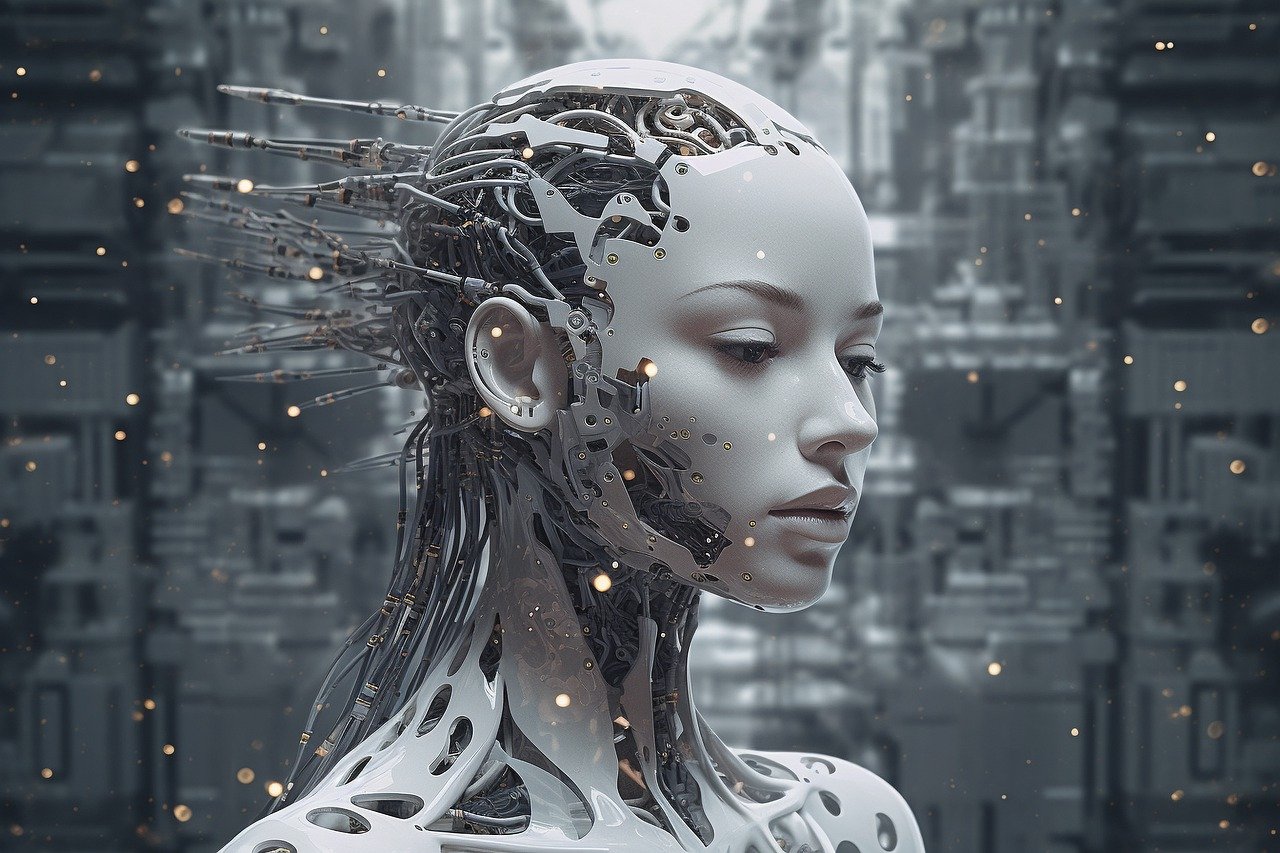Exploring the Potentials of ChatGPT: The Future of Human Interactions

August 22, 2023
In the rapidly evolving landscape of technology, artificial intelligence continues to shape the way we interact with our world. One of the most intriguing advancements in recent times is the development of advanced language models like ChatGPT. These models, powered by the revolutionary GPT-3.5 and 4.0. architecture, have not only transformed the way we communicate but have also paved the way for the future of human interactions.
ChatGPT Started a New Kind of AI Race
From Text Generation to Dynamic Conversations
ChatGPT is the brainchild of OpenAI, a research organization known for its groundbreaking work in artificial intelligence. It is built upon the foundation of Generative Pre-trained Transformers (GPT), which are designed to understand and generate human-like text based on the context provided to them. The journey of GPT models began with text generation tasks, where they demonstrated an impressive ability to produce coherent and contextually relevant passages of text.
As technology advanced, so did the capabilities of these models. With ChatGPT, the focus shifted from mere text generation to dynamic and interactive conversations. The model became adept at engaging in back-and-forths, responding to user prompts in a natural and contextually coherent manner. This transformation marked a crucial step towards leveraging AI for meaningful human interactions.
Unleashing the Power of Conversational AI
The potentials of ChatGPT in various domains are vast and exciting, with its applications steadily extending their reach:
Customer Support and Service
Traditional customer support systems often struggle with providing timely and accurate responses. ChatGPT, however, can offer instant assistance, answering queries and resolving issues with human-like efficiency. This can lead to enhanced customer experiences and reduced wait times. For instance, an e-commerce platform could use ChatGPT to help customers navigate product inquiries or troubleshoot common problems.
Content Generation
Content creators are always seeking ways to streamline their workflow. ChatGPT can assist by generating ideas, drafting articles, and even suggesting creative angles for various topics. This collaboration between human and AI has the potential to revolutionize content creation. Writers can leverage ChatGPT to overcome writer’s block, explore new perspectives, and produce content more efficiently.
Personalized Learning
Education is undergoing a digital transformation, and ChatGPT can play a pivotal role in this evolution. It can act as a personalized tutor, explaining complex concepts, answering students’ questions, and adapting its teaching style to individual learning preferences. Imagine a student having access to a virtual study partner that adapts to their learning pace and style, helping them grasp challenging subjects.
Idea Validation and Brainstorming
Entrepreneurs and innovators often need to validate their ideas. ChatGPT can serve as a brainstorming partner, offering insights, identifying potential challenges, and refining concepts through interactive discussions. This can accelerate the innovation process by providing a diverse range of perspectives and feedback.
Therapeutic Applications
AI has already shown promise in providing therapeutic interventions. ChatGPT could be used to create virtual conversational agents that offer emotional support and engage individuals in meaningful conversations, assisting in mental health support. These agents could provide a safe space for individuals to express their thoughts and emotions.
Ethical Considerations and Challenges
In the exhilarating realm of AI-powered conversations, there exists a parallel responsibility to navigate ethical considerations and address the challenges that arise from wielding such powerful technology. As ChatGPT and similar systems become integrated into our daily lives, these concerns demand our immediate attention.
Bias and Fairness
One of the foremost challenges in AI is mitigating biases present in training data. ChatGPT learns from vast amounts of text data available on the internet, which can inadvertently perpetuate societal biases. These biases, whether related to gender, race, or other sensitive topics, can manifest in AI-generated responses, reinforcing harmful stereotypes. Addressing bias requires a combination of diverse training data, refining algorithms to detect and rectify biases, and continuous human oversight.
Privacy and Data Security
Conversations with AI systems can sometimes involve sharing personal and sensitive information. Ensuring robust privacy measures, secure data storage, and adherence to data protection regulations is crucial to prevent unauthorized access or misuse of personal data. Users need to be assured that their interactions with AI remain confidential and protected.
Deceptive Interactions
The fine line between human and AI interactions raises concerns about transparency. Users may be led to believe they are conversing with a human when, in fact, they are interacting with an AI. Striking the right balance between creating valuable interactions and ensuring users are aware of the AI’s involvement is a challenge that developers must address. Transparency is key to maintaining trust.
Contextual Understanding and Misinterpretation
AI models like ChatGPT might struggle with understanding context accurately, leading to responses that are contextually incorrect or even offensive. This can result in misunderstandings and miscommunications, potentially causing harm or confusion. Developing AI models that can comprehend and respond contextually while avoiding misinterpretations is an ongoing challenge.
Dependency on AI
As AI systems become more proficient at handling various tasks, there’s a risk of over-dependency on them. Relying excessively on AI for decision-making or critical thinking could lead to a reduction in human cognitive abilities. Striking a balance between leveraging AI’s capabilities and maintaining our own skills is essential to prevent intellectual stagnation.
Unintended Consequences
The complexity of AI systems introduces the possibility of unintended consequences. AI-generated content might inadvertently spread misinformation or generate harmful content. Ensuring mechanisms for content review and responsible use of AI-generated output is necessary to prevent such outcomes.
Job Displacement
The adoption of AI technologies, including conversational AI, raises concerns about job displacement. As AI handles routine tasks, certain job roles might be affected. Preparing the workforce for this transformation and exploring ways in which AI can create new opportunities is imperative.
Regulation and Accountability
The rapid evolution of AI technology has outpaced the formulation of comprehensive regulations. Ensuring that AI systems are developed, deployed, and used responsibly requires a framework of guidelines and standards. Assigning accountability for AI-generated content and actions also remains a complex challenge.
To address these ethical considerations and challenges, a multidimensional approach is required. Developers must actively engage in bias detection and mitigation, ensure transparent communication about AI interactions, and prioritize user education. Collaboration between AI researchers, ethicists, policymakers, and the public is essential to navigate this evolving landscape responsibly.
OpenAI Connects ChatGPT to the Internet
The Road Ahead: Shaping the Future Together
As we navigate the exciting and complex landscape of AI-driven conversations, the road ahead holds immense promise and responsibility. Collaborative efforts between developers, researchers, policymakers, and users will play a pivotal role in shaping the trajectory of ChatGPT and similar AI technologies.
Ethical Development
The ethical implications of AI interactions cannot be overstated. Developers must remain committed to identifying and rectifying biases present in training data. By actively promoting diversity in data sources and employing bias detection techniques, we can work towards creating AI systems that are fair, inclusive, and respectful of all users.
Transparency and Accountability
Transparency in AI interactions is crucial. Users should be informed when they are interacting with an AI system, maintaining transparency about the capabilities and limitations of the technology. This openness fosters trust and empowers users to engage more effectively in meaningful conversations.
User Education
As AI technologies become more integrated into our lives, educating users about the capabilities and boundaries of these systems is essential. Users should be aware of what AI can and cannot do, which aids in managing expectations and preventing potential misunderstandings.
Collaborative Learning
The learning process for AI models like ChatGPT is ongoing. Developers should actively seek feedback from users to refine the system’s responses, enhance its conversational depth, and ensure its adaptability to different contexts. Collaborative learning helps to bridge the gap between AI and human understanding.
Human-AI Hybrid Solutions
Instead of viewing AI as a replacement, we should consider the potential for collaboration between humans and AI. Hybrid solutions, where AI augments human capabilities, can lead to synergistic outcomes. For instance, ChatGPT can assist medical professionals in diagnosing rare conditions by providing relevant information quickly.
Regulation and Policy
Policymakers and regulatory bodies have a crucial role in ensuring that AI technologies are developed and deployed responsibly. Establishing frameworks that address privacy, data security, and ethical use of AI will be vital to prevent misuse and protect user interests.
Public Engagement
Including public perspectives in the development and deployment of AI systems is essential. Public engagement can offer valuable insights, help identify potential risks, and ensure that the technology aligns with societal values and needs.
Interdisciplinary Collaboration
AI is not solely the domain of computer science. Interdisciplinary collaboration with experts in fields such as psychology, ethics, linguistics, and sociology can provide holistic insights into the impact of AI on human interactions.
Embracing the New Era of Conversations with ChatGPT
The evolution of artificial intelligence has led us to a point where machines can converse with us in ways that were once the realm of science fiction. ChatGPT, standing at the forefront of this transformation, has proven itself to be more than just a language model; it’s a portal to a future where human interactions are enriched and redefined.
From its origins as a text generator to its current status as a dynamic conversational partner, ChatGPT showcases the remarkable progress AI has made in understanding and emulating human language. Its potential applications span across industries and domains, from providing exceptional customer service and aiding content creation, to personalizing education and assisting with emotional well-being.
However, as we ride this wave of innovation, we must remain conscious of the responsibilities that come with it. Ethical considerations, such as bias mitigation and transparent communication with users, are vital to ensure that AI-powered interactions remain both respectful and authentic. Striking the balance between enhancing human capabilities and retaining genuine human connections is a challenge that requires ongoing collaboration and ethical introspection.
5 ChatGPT Extensions for Google Chrome to Enhance Your AI Experience
For a Balanced, AI-Driven Future
The journey ahead involves a collective effort. Developers, users, and researchers must continue to work together to refine ChatGPT’s capabilities, address its limitations, and create a framework of accountability. This journey is not just about technological advancement but also about shaping the future of human interactions. It’s about embracing the synergy between human intellect and AI intelligence, ultimately paving the way for a more efficient, empathetic, and interconnected world.
As we bid farewell to the traditional boundaries of human communication, we welcome the dawn of a new era—a time where conversations are no longer confined by language barriers, where learning is personalized and interactive, and where support and creativity know no bounds. ChatGPT is more than a tool; it’s a companion on this transformative expedition. With responsible development and thoughtful integration, we are empowered to explore the limitless potentials of AI-driven conversations, making the future of human interactions a promising reality.








